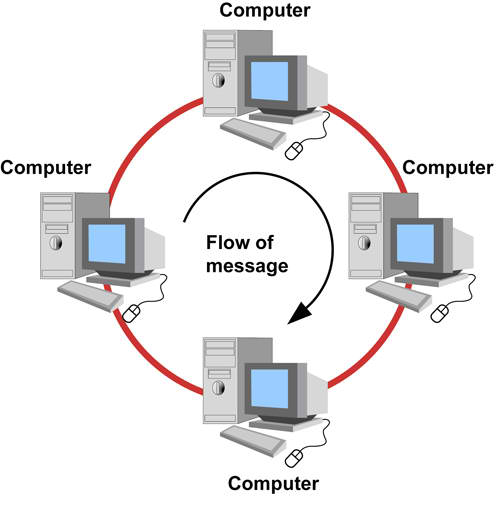Ring Topology
Ring Topology
The ring topology connects computers on a single circle of cable. There are no terminated ends. A ring topology connects one host to the next and the last host to the first. The signal travels around the loop in one direction and pass through each computer. Unlike the passive bus topology, each computer acts like a repeater to boost the signal and send it on to the next computer. Because the signal passes through each computer, the failure of one computer can impact the entire network.

Ring Topology
One method of transmitting data around a ring is called token passing. The token is passed from computer to computer until it gets to a computer that has data to send. The sending computer modifies the token, puts an electronic address on the data, and sends it around the
Advantages of Ring Topology
1. This type of network topology is very organized. Each node gets to send the data when it receives an empty token. This helps to reduces chances of collision. Also in ring topology all the traffic flows in only one direction at very high speed.
2. Even when the load on the network increases, its performance is better than that of Bus topology.
3. There is no need for network server to control the connectivity between workstations.
4. Additional components do not affect the performance of network.
5. Each computer has equal access to resources.
Disadvantages of Ring Topology
1. Each packet of data must pass through all the computers between source and destination. This makes it slower than Star topology.
2. If one workstation or port goes down, the entire network gets affected.
3. Network is highly dependent on the wire which connects different components.
4. MAU's and network cards are expensive as compared to Ethernet cards and hubs.
